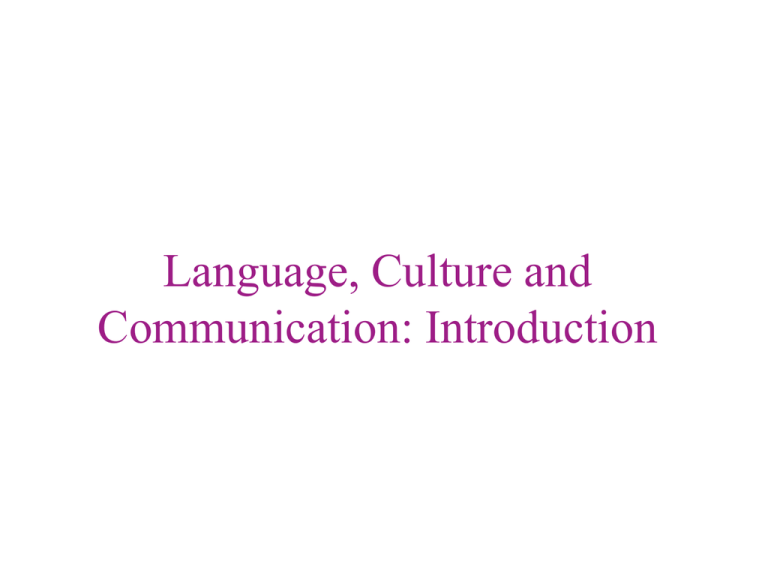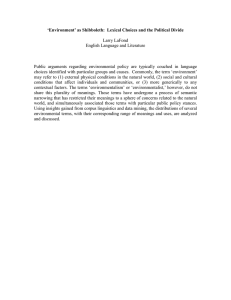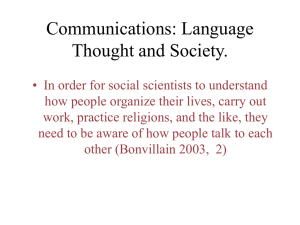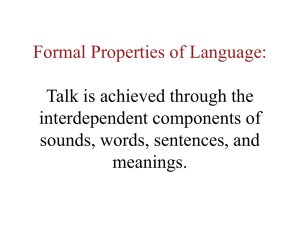Language, Culture and Communication: Introduction
advertisement

Language, Culture and Communication: Introduction Communicative Interactions Meanings transmitted through language Situational , Social and Cultural Situational Meanings: • Conveyed through the form of language depending on context • Example: formal and informal encounters Social Meanings: • Transmitted by members of different social sectors through a particular use of language • Example: gender differentiation, occupation, social class position, etc Cultural Meanings: • When words carry specific symbolic meaning or cultural specific meanings. Transmitted by a particular use of language • Example: language expressions The act of speaking is action The importance of the links between language and culture • To understand the importance of human communication • To understand social and cultural behaviors • Cultural contexts in which language is used Cultural Model A cultural model is a construction of reality that is created, shared, and transmitted by members of a group (similar to an ideology) Speech Community A group of people who speak the same language, share norms about appropriate uses of language, and share social attitudes toward language ant its use. Characteristics of Human Communication • Productivity: the ability to communicate many messages efficiently • Displacement: the ability to think in the past, the future and the present The Properties of Languages • Sounds • --Phoneme: a minimal unit of sound that functions to differentiate the meaning of words • Vocabulary • Grammar: rules for combining sounds into sequences that carry meaning The Origins of Languages • 50,000 • Started as paralanguage: non-verbal communication (body posture, voice tone, touch, smell and facial movements) • All languages equally efficient (semantically and grammatically) • Semantics: the study of meaning in language, including the analysis of meaning of words and sentences


![Word Study [1 class hour]](http://s3.studylib.net/store/data/007905774_2-53b71d303720cf6608aea934a43e9f05-300x300.png)




